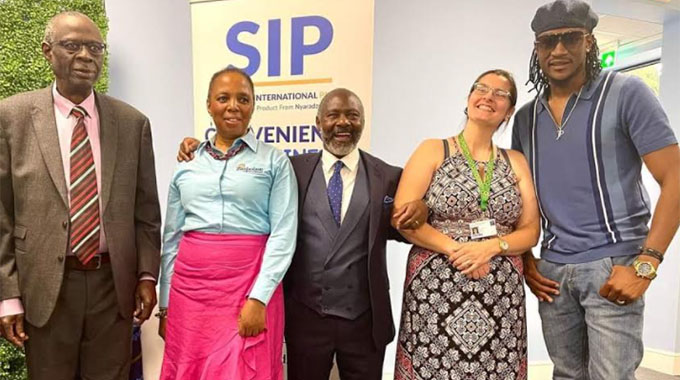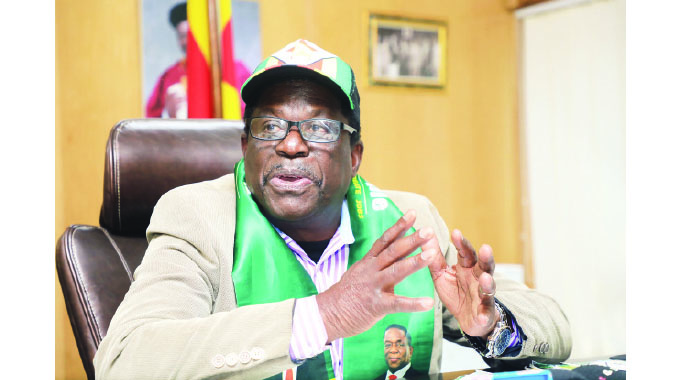EDITORIAL COMMENT : Manhize steel works a giant leap for Zim

The massive US$1 billion investment into Zimbabwe’s new steel industry and all its associated mines, smelters, coking plants and the like seems to be on course for production to start next year.
The two ferrochrome smelters in Selous are already up, the first giant coke battery is already open in Hwange with the second under construction and now the detailed planning and layout work being done at Manhize where the iron ore will be mined and the steel smelted and processed.
Manhize is in the south-west of Chikomba district, almost on the border with Chirumhanzu district and close to the eastern border of Kadoma district and all three areas are seeing the mines, the steelworks and the new town as an engine of local development and major source of decent jobs, both direct employees of Tsingshan Group Holdings, who is doing the direct investment, and in all the service sectors that will automatically gravitate around a major new industrial centre.
The traditional leadership in the area, on both sides of the Chikomba-Chirumhanzu border, is fully on side although are also looking after their own by wanting as many of the new jobs as possible to go to the local communities. That is a perfectly valid and reasonable desire since there will be some modest local disruption as a few families are moved to make way for the new dam, the new mine and the new town.
But they are co-operating fully and are fully alive to the fact that while the giant Chinese investor is opening the mine, building the steel plant, and building the houses where its workers will live, it will not be running the shops, the service stations, the banks and all the other economic activity that the large workforces will require, so there is a lot of scope for Zimbabwean investors and businesses.
Generally all this sort of associated economic activity doubles the employment available in most mining and industrial centres. You can see this in Selous itself where Tsingshan produces the ferrochrome that the new steel mills will need. There are still people who remember when that thriving town was 10 houses, five shops, a post office and a service station on the main road.
This local development is important, and needs to be incorporated into the planning as the Chirumhanzu Rural District Council has noted and has already said it can find the land for all the extra development required in a large thriving community.
The sad thing about all this massive investment, and the acceleration it will give to Zimbabwean mining and industry as well as its catalyst function for economic development in a fairly poor farming area, is that it could have come much earlier but for the greed of unnamed politicians in the dying decade of the First Republic who thought they could get very rich by signing a piece of paper.
Former Ambassador to China Chris Mutsvangwa this week amplified the comments already made by Tsingshan Group that the investment climate was not good until the new investment drive was launched by the Second Republic. He let the cat out of the bag by noting that it was a G40 politician, backed by others of his colleagues, who demanded a free 60 percent shareholding to “indigenise” the investment.
Quite naturally Tsingshan just shook their heads at such incredible greed and went and built a giant steel mill with associated mines in Indonesia, which had already put in the sort of investment climate that major global investors require and which Zimbabwe has now done. But we lost more than half a decade before President Mnangagwa, on his State visit to China, made very sure to meet the Tsingshan owners and managers and spelt out exactly what the Second Republic was doing to change everything.
The huge investment has so many national advantages that it beggars belief that anyone could even try and block it instead of working flat out to attract it and make it work. For a start, Zimbabwean industrialists get a primary raw material, a whole range of steels and steel products, on tap. While mature industrial nations might be talking about the post-industrial societies they are building, it is a fact that no country can move its industry forward without that heavy industrial base.
Secondly, the Manhize mills will be the largest steel producer in Southern Africa, and producing as modern steel mills do a wide range of steels, stainless steels and the sheets and other products everyone needs. While Zimbabwean industrialists, builders and others will be buying a share, much of the production must be exported, and fortunately many of our neighbours are also industrialising and developing fast, so their business people are going to be major customers.
It is worth noting that all the trade agreements, common markets and now the Africa Free Trade Area being put in place are centred on local content. The finished products coming out of Manhize are going to be made in Zimbabwe from Zimbabwean rocks: the iron ore, chrome ore, nickel ore, coke from Zimbabwean coal, limestone and the other raw materials. Plus they are being smelted and processed in Zimbabwe. You do not get content any more local than that. Fairly obviously that was one of the attractions for Tsingshan’s Zimbabwean investment, having production inside the regional market to add to the advantage of having almost all raw materials round the corner.
While Tsingshan will be making a profit from its major business investment, otherwise it would not have bothered coming, the major advantage of that investment will be for Zimbabwe as we finally have the full range of modern steel products that our heavy industry and construction need to accelerate other development, a big jump in exports as we convert rocks into high-value finished products, several thousand decent jobs for hard-working Zimbabweans, and a major development centre for a seriously undeveloped part of Zimbabwe.
Tick the boxes and you see why the Second Republic, from the word go, saw sorting out our investment drive, and pushing anti-corruption so hard, were such high priorities, and why so many legal and administrative changes were pushed through to turn the rhetoric into a reality. Now the 279th largest company on Earth feels that sinking US$1 billion into Zimbabwe, rather than some other lucky country, was a worthwhile business deal. So Tsingshan wins, but we win far more.










Comments